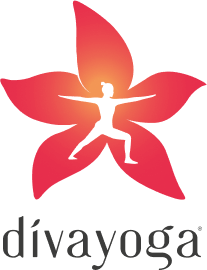YOGA WITH A CHAIR

Chair yoga was developed by BKS Iyengar and his wife Geeta to build a helpful practice specially for people with injuries or inability to achieve certain poses. Chair yoga is a means to achieve the end resulted which is unsupported asana practice with proper alignment, stability, precision and staying longer in the asana.
This form was developed to help perform difficult postures independently, and help achieve correct alignment during the asana practice. Chairs are best to stay longer in challenging asanas in order to attain the full benefit of the pose. It's excellent to investigate asanas in depth.
Chair yoga is an ideal exercise for those suffering from health conditions, such as chronic pain, carpal tunnel syndrome, osteoporosis, and multiple sclerosis. It may also benefit people over a certain age who have trouble moving through the up and down motions of traditional yoga. Chair yoga allows them to stay stabilised. Yoga offers a myriad of benefits.
Benefits
- Helps increase flexibility
- Helps in mobility of joints and increases range of motions of the joints and spine
- Helps improve mental state
- Excellent for individuals with injuries or aches and pain especially in the knee joint
Precautions
- Keep the chair against the wall whenever body weight is being put on the chair
- Use a sturdy chair during practice
- Make sure you are very well aware of the placement of chair for various asanas
- Make sure the camera angle of your and your client is set effectively for observation and demonstration
- Make sure the alignment cues are given correctly
Some for the common poses used in chair yoga are:
Standing Asanas
- Tadasana ( 2 variations- chair in fron, chair behind )
- Adho Mukha Svanasana (Raising the palms, chair inverted)
- Ardha Uttanasana (Outer wrists on the backrest, resting the forehead on the bolster)
- Uttanasana (head resting on the seat, shoulder girdle on the seat)
- Utthita Trikonasana (Chair behind, chain in front)
- Virbadharasana 1 & 2
- Utthita Parsvakonasana
- Ardha chandrasana (Chair behind)
- Parivrtta Trikonasana (Twisting to face the chair, foot in between the leg/inverted chair)
- Parivrtta ardha chandrasana (Chair behind, leg on the wall)
- Parivrtta parsvakonasana (Seat on the chair, twisting to face the chair)
- Virabhadrasana III (Outer wrist on backrest, one leg on the wall)
- Parsvottanasana (Leg in between the leg of the chair/inverted chair)
- Prasarita Padottanasana I (Hip on the wall arms on the seat of the chair)
- Utthita Hasta Padangusthasana II (Knee bent, knee straight with belt)
- Utthita Hasta Padangusthasana I (Forward, with belt and blanket)
- Utkatasana (Edge of the chair)
- Garudasana (Edge of the chair)
Seated poses
- Dandasana (Chair behind, with block)
- Paschimottanasana (Chair in front, with belt)
- Janu Sirsasana
- Virasana (Chair behind)
- Baddha Konasana (Chair in front)
- Half Lotus fold
- Parsva Sukhasana
- Bharadvajasana (On the chair/ on the floor)
- Marichyasana 1 & 2
